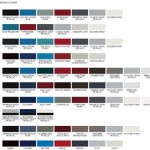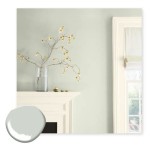Old House Interior Paint Colors: A Guide to Historical Accuracy and Aesthetic Choices
Selecting appropriate interior paint colors for an old house is a multifaceted endeavor, demanding a careful balance between historical accuracy, personal preferences, and the creation of a cohesive and pleasing aesthetic. The goal is not merely to apply paint, but to enhance the architectural details, complement the age and character of the structure, and establish a comfortable and inviting living space. This process requires research, consideration of lighting conditions, and an understanding of how colors interact with the materials and finishes typically found in older homes.
Understanding Historical Color Palettes
One of the first steps in selecting paint colors for an old house is researching the historical color palettes prevalent during the period of the house's construction. Color trends have evolved significantly over time, and using colors that are anachronistic can detract from the historical integrity of the building. Several resources are available to assist in this research, including historical societies, museum collections, and paint manufacturers that offer historically accurate color lines. These resources often provide information about the pigments and formulations used in specific eras, as well as guidance on how colors were typically combined in interior spaces.
For example, houses built in the Victorian era (roughly 1837 to 1901) often featured rich, saturated colors such as deep reds, greens, and blues. These colors were often used in combination, with different shades of the same color used to create depth and dimension within a room. During the Arts and Crafts movement (late 19th and early 20th centuries), more muted and natural colors, such as browns, greens, and creams, became popular, reflecting the movement's emphasis on craftsmanship and connection to nature. Colonial houses (primarily 17th and 18th centuries) often employed simple, earthy colors such as whites, creams, grays, and ochres, due to the limited availability of pigments at the time. Federal style homes, building on the Colonial but with a more formal and streamlined aesthetic, often utilized lighter, more sophisticated versions of these same colors, often incorporating pastel shades. Understanding these broad trends can provide a starting point for selecting appropriate colors for a specific house.
It's crucial to note that "historically accurate" does not necessarily mean replicating the colors exactly as they were used originally. Over time, colors can fade and change due to exposure to light and other environmental factors. Furthermore, original paint finishes may have been applied in multiple layers, with each layer representing a different period. Therefore, selecting colors that evoke the spirit and character of the era, rather than attempting a precise replication, is often the most practical and aesthetically pleasing approach. Consulting with a historical paint specialist or architectural historian can provide valuable insights into the original colors and finishes of a particular house and offer guidance on selecting appropriate alternatives.
Investigating existing paint layers is also a vital step. This can be done by carefully scraping away layers of paint in inconspicuous areas, such as closets or behind trim, to reveal the original colors. This process can provide valuable clues about the original color scheme and help inform the selection of new paint colors. Be aware of potential lead paint concerns, especially in homes built before 1978, and take appropriate safety precautions when removing paint layers.
Consideration of Architectural Details and Lighting
The architectural details of an old house, such as moldings, trim, and wainscoting, play a significant role in determining appropriate paint colors. These details often possess unique characteristics that should be highlighted or complemented by the paint colors chosen. For example, intricate moldings can be accentuated by using different colors for the walls and trim, creating a sense of depth and visual interest. Conversely, simpler architectural details may benefit from a more monochromatic color scheme, allowing the focus to remain on the overall form and character of the room.
The existing materials within the house, such as wood floors, fireplaces, and built-in cabinetry, also influence paint color selection. Colors should be chosen that complement these materials and create a harmonious overall aesthetic. For example, warm wood tones may pair well with warm-toned paint colors, such as creams, yellows, and ochres. Cool wood tones may be better suited to cooler paint colors, such as blues, greens, and grays. It's often helpful to collect samples of the existing materials and compare them to different paint colors to see how they interact.
Lighting is another critical factor to consider when selecting paint colors. Natural light can significantly affect the way colors appear, making them appear brighter and more vibrant. Artificial light, on the other hand, can alter colors in different ways, depending on the type of light bulb used. Therefore, it's essential to test paint colors in the room under different lighting conditions before making a final decision. Paint swatches can be taped to the walls and observed throughout the day and night to see how they appear in different light. It is important to consider the orientation of the room; north-facing rooms tend to have cooler, more subdued light, while south-facing rooms receive warmer, brighter light. The location also impacts the lighting, as a house in a wooded area will have very different light than one with a clear sky and open field.
Rooms with limited natural light may benefit from lighter paint colors, which can help to brighten the space and make it feel more open. Darker paint colors can be used effectively in rooms with ample natural light, creating a sense of drama and intimacy. Matte finishes tend to absorb light, making colors appear richer and more saturated, while glossy finishes reflect light, making colors appear brighter and more vibrant. The choice of paint finish should be carefully considered in conjunction with the paint color and the overall desired effect.
Selecting Paint Finishes and Formulations
The choice of paint finish is just as important as the color itself. Different finishes offer different levels of sheen, durability, and ease of cleaning. Historically, matte and eggshell finishes were more common in older homes, as they provided a softer, more muted look that complemented the architectural details and materials of the time. However, modern paint formulations offer a wider range of finishes with improved durability and cleanability, making them a more practical choice for many homeowners.
Flat or matte finishes have very little sheen and tend to absorb light, creating a soft, velvety appearance. They are a good choice for walls that are not subject to heavy wear and tear, such as bedrooms and living rooms. Eggshell finishes have a slightly higher sheen than matte finishes and are more durable and easier to clean. They are a good choice for walls in kitchens, bathrooms, and hallways. Satin finishes have a higher sheen than eggshell finishes and are even more durable and easier to clean. They are a good choice for trim, doors, and cabinets.
Semi-gloss and gloss finishes have the highest sheen and are the most durable and easiest to clean. They are a good choice for areas that are subject to heavy wear and tear, such as kitchens, bathrooms, and laundry rooms. However, high-gloss finishes can also accentuate imperfections in the walls, so they should be used with caution in older homes that may have uneven surfaces. When choosing a paint finish, it's important to consider the location of the room, the level of traffic it receives, and the desired aesthetic.
Modern paint formulations offer a wide range of options, including low-VOC (volatile organic compounds) paints, which are environmentally friendly and healthier to use. These paints release fewer harmful chemicals into the air, making them a good choice for homeowners with allergies or sensitivities. Other specialized paint formulations are available for specific applications, such as paints that are resistant to mold and mildew, or paints that are designed to adhere to difficult surfaces. When selecting a paint formulation, it's important to read the product label carefully and choose a paint that is appropriate for the specific surface and application.
Proper surface preparation is crucial for ensuring a long-lasting and beautiful paint finish. Before painting, the surfaces should be thoroughly cleaned and repaired. Any loose or peeling paint should be scraped away, and any cracks or holes should be filled with spackle or patching compound. The surfaces should then be sanded smooth and primed with a high-quality primer. The primer will help the paint adhere better to the surface and provide a uniform base for the color. It is important to allow the primer to dry completely before applying the paint.
In summary, selecting interior paint colors for an old house requires a thoughtful and informed approach, balancing historical accuracy with personal preferences and practical considerations. By researching historical color palettes, considering architectural details and lighting, and selecting appropriate paint finishes and formulations, homeowners can create a beautiful and historically sensitive living space that honors the unique character of their old house.

Neutral Paint Colors For Historic Homes No Way The Decorologist

How To Use Color Make Your Vintage Home Reflect Its History Sonoma

Neutral Paint Colors For Historic Homes No Way The Decorologist

5 Best Paint Colors For Old Houses Interior Ideas

Neutral Paint Colors For Historic Homes No Way The Decorologist

5 Best Paint Colors For Old Houses Interior Ideas

Home Life For A Look That S Truly Timeless Choose Historical Paint Colors

Neutral Paint Colors For Historic Homes No Way The Decorologist

Interior Paint Colors For Our 100 Year Old House Simple Decorating Tips

5 Modern Paint Colors That Work Surprisingly Well In Old Houses
Related Posts








